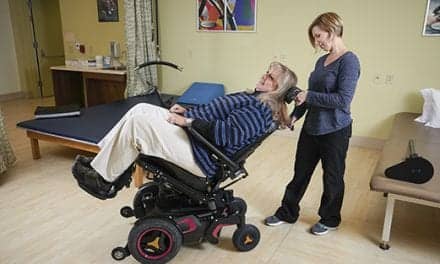The Journal of Rehabilitation Research and Development (JRRD), published by the Department of Veterans Affairs, has released Volume 48, Issue 1, which contains several articles of interest to physical medicine professionals.
Manuscripts featured in this issue include:
Heterotopic ossification in combat amputees from Afghanistan and Iraq wars: Five case histories and results from a small series of patients
The article describes selected case histories of combat amputees with heterotopic ossification, or excess bone growth in soft tissues that frequently occurs in residual limbs. Heterotopic ossification, a significant postinjury complication that may impair the rehabilitation of amputees, can cause skin breakdown and pain and interfere with a patient’s ability to walk. The case histories illustrate how the location of the heterotopic ossification relative to the pressure-sensitive areas of the residual limb may determine whether patients experience symptoms.
Falls requiring medical attention among veterans with multiple sclerosis: A cohort study
Approximately 16,000 veterans with multiple sclerosis (MS) receive health care services from the Veterans Health Administration each year. This study furthers existing research on falls in the veteran population by estimating the relative risk of an injurious fall requiring medical attention in veterans with MS versus those without MS, after adjusting for sex, age, and health care use. The study findings show that the risk of an injurious fall was three times higher for female veterans with MS than for female veterans without MS. The risk of an injurious fall was also higher for men with MS than for men without MS, but this difference was not statistically significant.
Dimensional accuracy of ankle-foot orthoses constructed by rapid customization and manufacturing framework
Passive-dynamic ankle-foot orthoses (PDAFOs) rely on material properties and physical features to establish functional characteristics such as bending or rotational stiffness. Prescribed PDAFOs are often generic, having standardized fit and functional characteristics. The described study evaluates the dimensional accuracy of customized PDAFOs fashioned from a computer-aided design model.
Development of finger-motion capturing device based on optical linear encoder
Data gloves for hand-motion capture are a promising tool for objectively assessing finger movements and rehabilitation strategies. This article describes the design and validation of the SmartGlove, a wearable multifinger sensing device that uses 10 optical linear encoders to capture the motion of the 14 finger joints. Study results show high repeatability and reliability in both the gripped and flathand positions for the SmartGlove.
Measurement of lower-limb muscle spasticity: Intrarater reliability of Modified Modified Ashworth Scale
Muscle spasticity is a complex and disabling motor disorder that occurs following conditions such as stroke, MS, spinal cord injury, and cerebral palsy. The Modified Modified Ashworth Scale (MMAS) is a clinical tool for measuring spasticity. This article describes how consistently the MMAS measures spasticity when performed by one rater across two occasions (intrarater reliability). Three muscle groups in the lower limb were assessed: hip adductors, knee extensors, and ankle plantar flexors. The results indicate reliability was moderate for the hip adductors, good for the knee extensors, and very good for the ankle plantar flexors.
JRRD is a peer-reviewed, scientifically indexed journal providing comprehensive coverage of all rehabilitation disciplines.
[Source: JRRD]




